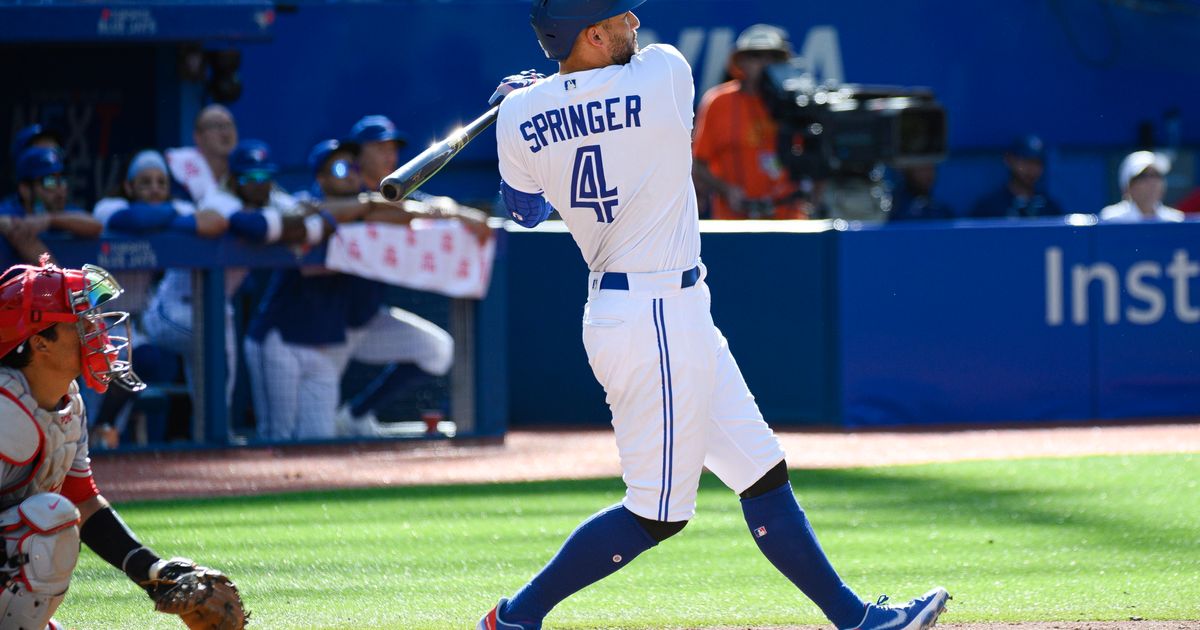
With an additional wild card in each league, we could have expected the following this year:
1. Teams at the top of the standings would be even more secure in their postseason chances down the stretch.
2. More teams overall would be able to stay in contention.
So far, however, the impact of baseball’s expanded postseason is marginal.
According to the playoff chances tracked by Fangraphs.com, six teams — the Dodgers, Mets, Astros, Yankees, Braves and Cardinals — have at least a 95% chance to make the postseason. At this point last year — after each team had played at least 126 games — there were actually seven teams above the 95% mark. And that was with two fewer spots available.
Over the past five full seasons — not counting the shortened 2020 campaign — there have been an average of 5.2 teams with at least a 95% chance of making the playoffs at this point in the season. So this year hasn’t been much of a change, even with the postseason expanding to 12 teams.
It’s a similar story at the other end of the spectrum. Right now, 14 teams have postseason chances of below 5%. The average over the past five seasons? 14.4.
In other words, even under the new playoff system, the number of teams within striking distance isn’t significantly different than usual. Perhaps that’s because adding a third wild card in each league hasn’t really lowered the bar for making the postseason.
There was concern that teams at or near .500 would be able to qualify, but at least this year, it doesn’t look like that’s going to happen. The Toronto Blue Jays, currently on pace for 87 wins, hold the third wild card in the American League at the moment. In the National League, that spot belongs to the San Diego Padres, who are on pace for 88 victories.
Another way in which the new format was expected to change the regular season was by creating an interesting race for the top two seeds in each league, since they receive byes to the Division Series round. That’s shaping up to be an anticlimactic pursuit in the AL, where the Astros and Yankees have separated themselves from everyone else.
In the NL, however, the NL East champion is likely to be the No. 2 seed, meaning that race — the Mets lead the Braves by three games — could be quite suspenseful.
TALE OF TWO SEASONS
Josh Hader is still tied for the NL lead with 29 saves, but his season has fallen apart of late.
Hader did not allow a run through his first 19 appearances, and after a scoreless inning at Pittsburgh on July 3, he had a 1.05 ERA in 27 outings. Since then, he’s allowed 25 runs in 13 innings, and his ERA for the season is up to 6.52. The Padres, who acquired him in a recent trade with Milwaukee, have given him a break from the closer role.
TRIVIA TIME
If there had been a third wild card in each league last year, which teams would have qualified?
LINE OF THE WEEK
Justin Verlander threw six no-hit innings and struck out 10 before being lifted in Houston’s 4-2 victory over Minnesota on Tuesday night. Verlander was pulled because he’d thrown 91 pitches.
An honorable mention to Seattle’s George Kirby, who set a major league record with 24 consecutive strikes to begin Wednesday’s game against Washington. He did not throw a ball until the third inning, although the Nationals hit enough of those strikes to score an early run on Kirby.
COMEBACK OF THE WEEK
Charm City’s team has lived a charmed life at times this year. The Baltimore Orioles have played their way into contention after dropping 110 games in 2021. Their most dramatic victory may have come Thursday night.
Down by a run with two outs in the ninth and nobody on, rookie Kyle Stowers homered to tie the score against the White Sox. It was his first career home run — and it was made possible by an error earlier in his at-bat when he hit a foul fly that wasn’t caught.
The Orioles won the game 4-3 in 11 innings.
TRIVIA ANSWER
The Blue Jays (91-71) and Reds (83-79).
___
Follow Noah Trister at https://twitter.com/noahtrister
___
More AP MLB: https://apnews.com/hub/mlb and https://twitter.com/AP_Sports